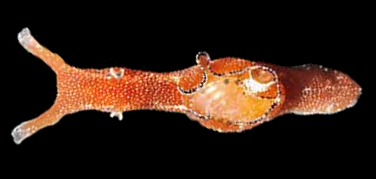
Rostanga is a genus of sea slugs in the family Discodorididae. Some sources, such as The Sea Slug Forum still classify Rostanga in the family Dorididae.

Opisthobranchs is now an informal name for a large and diverse group of specialized complex gastropods which used to be united in the subclass Opisthobranchia. That taxon is no longer considered to represent a monophyletic grouping.

Aplysiidae is the only family in the superfamily Aplysioidea, within the clade Anaspidea. These animals are commonly called sea hares because, unlike most sea slugs, they are often quite large, and when they are underwater, their rounded body shape and the long rhinophores on their heads mean that their overall shape resembles that of a sitting rabbit or hare. Sea hares are however sea snails with shells reduced to a small plate hidden between the parapodia, and some species are extremely large. The Californian black sea hare, Aplysia vaccaria is arguably the largest living gastropod species, and is certainly the largest living heterobranch gastropod.

Aplysia is a genus of medium-sized to extremely large sea slugs, specifically sea hares, which are one clade of large sea slugs, marine gastropod mollusks.
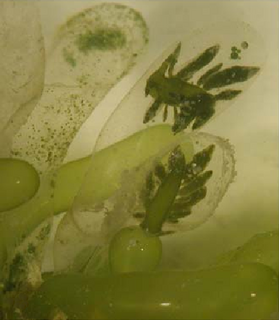
Limapontiidae is a taxonomic family of small to minute sacoglossan sea slugs. These are marine opisthobranch gastropod mollusks.

Doriprismatica sedna is a species of colorful sea slug, a dorid nudibranch, a marine gastropod mollusk in the family Chromodorididae.

Aplysia fasciata, common name the "mottled sea hare", or the "sooty sea hare", is an Atlantic species of sea hare or sea slug, a marine opisthobranch gastropod mollusk in the family Aplysiidae.

Aplysia dactylomela, the spotted sea hare, is a species of large sea slug, a marine opisthobranch gastropod in the family Aplysiidae, the sea hares.
Aplysia extraordinaria, common name the "extraordinary sea hare", is a very large species of sea slug, more specifically a sea hare, a marine opisthobranch gastropod mollusk in the family Aplysiidae, the sea hares.

Aplysia juliana, the walking sea hare, is a species of sea hare, a marine gastropod in the family Aplysiidae.
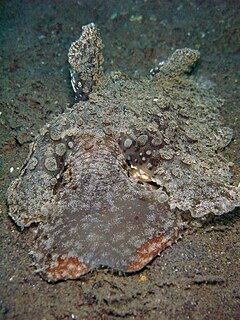
Melibe viridis is a species of sea slug, a nudibranch, a marine gastropod mollusk in the family Tethydidae.
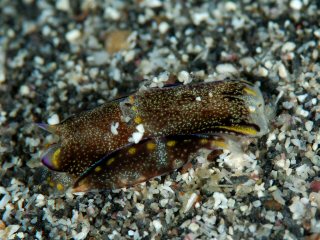
Philiopsis is a genus of often colorful, medium-sized sea slugs, marine opisthobranch gastropod mollusks. These are not nudibranchs; instead they are headshield slugs, in the clade Cephalaspidea.
William B. Rudman, usually known as Bill Rudman, is a malacologist from New Zealand and Australia. In particular he studies sea slugs, opisthobranch gastropod molluscs, and has named many species of nudibranchs.
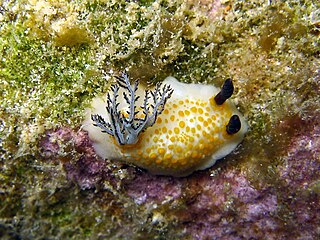
Taringa is a genus of sea slugs, dorid nudibranchs, shell-less marine gastropod mollusks in the family Discodorididae.

Thordisa is a genus of sea slugs, dorid nudibranchs, shell-less marine gastropod mollusks in the family Discodorididae.
Halgerda onna is a species of sea slug, a dorid nudibranch, shell-less marine gastropod mollusks in the family Discodorididae.

Melanochlamys is a genus of headshield slugs in the family Aglajidae. Despite the appearance of its species, this genus must not be confused with nudibranchs.
Berghia marcusi is a species of sea slug, an aeolid nudibranch. It is a shell-less marine gastropod mollusc in the family Aeolidiidae.

Felimare kempfi is a species of sea slug, a dorid nudibranch, a shell-less marine gastropod mollusk in the family Chromodorididae.
Spurilla braziliana is a species of sea slug, an aeolid nudibranch. It is a shell-less marine gastropod mollusc in the family Aeolidiidae.

